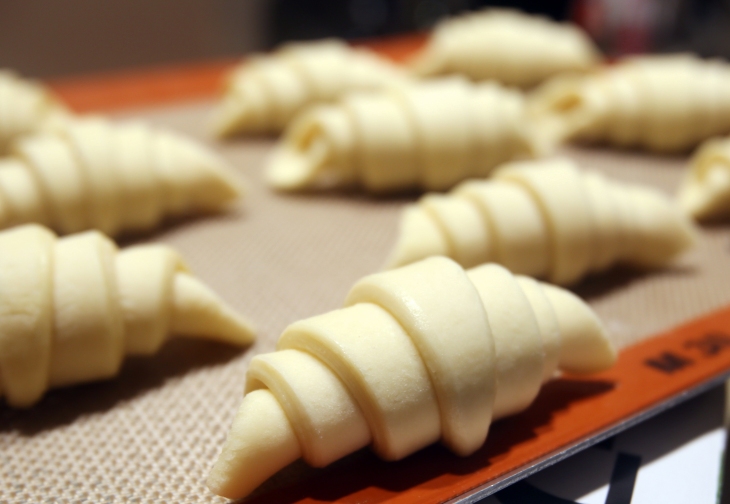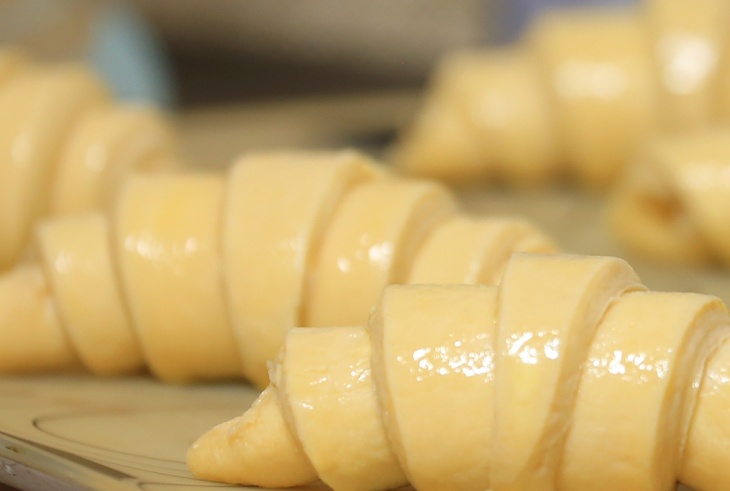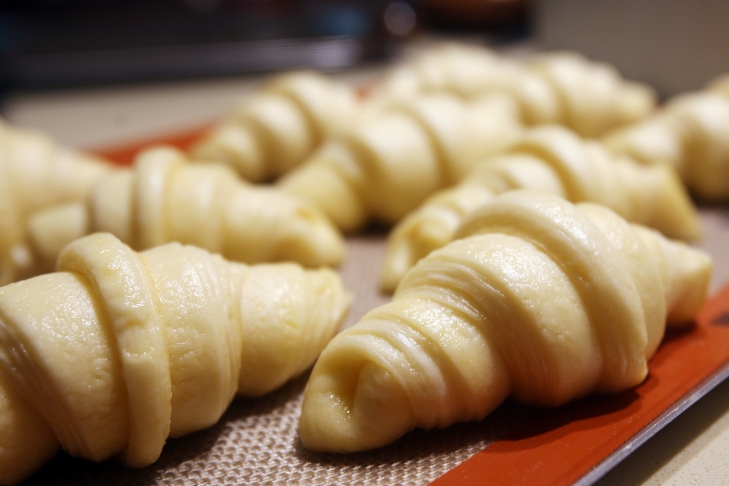Whenever we talk about typical French breakfast, croissant is always No 1. It seems there is no any other choice. Take a quick walk around some streets in Paris, you will always see a sign of “special offer for breakfast” – Croissant + coffee! Anyway sometime they may offer you “pain au chocolat”.
There is a long dispute for over hundreds of years: “Croissant is French or Austrian?” We also got this question during our writing exam at Le Cordon Bleu. Believe it or not, but it seems this famous viennoiserie not belongs to Napoléon!

Anyway, croissant is simple, but to make it good – it surely requires a very good technique, good ingredients and also a luck in the kitchen! During the basic pastry course at LCB, we did croissant only once, but it was like a quick introduction, only until my baking course early this year, our class kept doing the croissant several times with different variations. So here I’m sharing with you what do we need to prepare, the only thing that I did this croissant with fermented dough from my natural leaven, i.e there is no dry yeast at all. So click the link, to find out how to prepare the fermented dough from natural leaven.
Step 1 Croissant dough
- Bread flour 125 gr.
- All purpose flour 125 gr.
- Salt 5 gr.
- Fermented dough 150 gr.
- Sugar 30 gr.
- Butter 25 gr.
- Water 80 ml.
- Milk 50 l.
- Dusting flour 50 gr.
For the turns (tourage)
- Butter 125 gr. (ideally dry butter or regular unsalted butter)
Knead all together except the tourage butter, at first speed for 5′ then 10′ at the second speed, until we get very smooth dough. Cover it with film and keep in the fridge overnight.
With baking paper or plastic, make 125 gr. of tourage butter into thin, square shape. Keep it in the fridge until next day use.
Next day, put the tourage butter on the croissant dough , cover it as an envelope, then do 5 single turns or 3 double turns or 1 double, 1 single. We need to do it quick between each turn and put it in the fridge, otherwise the melted butter will cause a big trouble, during the turns, we need to dust the surface and the dough, but remember we need to clean all dusting flour on the dough when we fold it.

After all turns, now time to lengthen and cut out the dough, the thickness should be around 3 mm. or 3,5 mm and cut at least 6 triangles (10 cm x 24 cm)

After we roll the triangle to the croissant shape as above photo, now time for the final fermentation, at least 2 hours at 25-27°C.


After baking we usually cut in the middle to check the inside texture, our French chefs do love when the croissant is hollow, with big holes, big space, but I do prefer just a little bit thicker and as I used only fermented dough from my natural leaven, without dry yeast, so the croissant is perfect for me. Light, crunchy from the outside, so butter-flavorful.

Next day when I still have some leftover croissants in the fridge, I put a bit cheese on top and bake it again for about 10 minutes at 200°C, then with slices of cheese, ham, tomatoes…I have a wonderful breakfast for the weekend. .

Bon appetite!
Making those requires a skill set I do not have! They look like perfection.
LikeLike
Thank you for visiting my new blog! Just try! You never know! I did hundred times but still in learning!
LikeLiked by 1 person
Well yours are perfect.
LikeLike